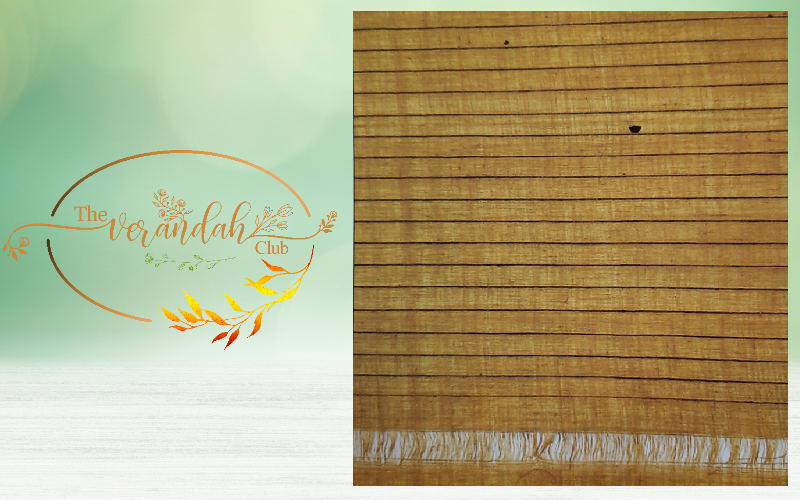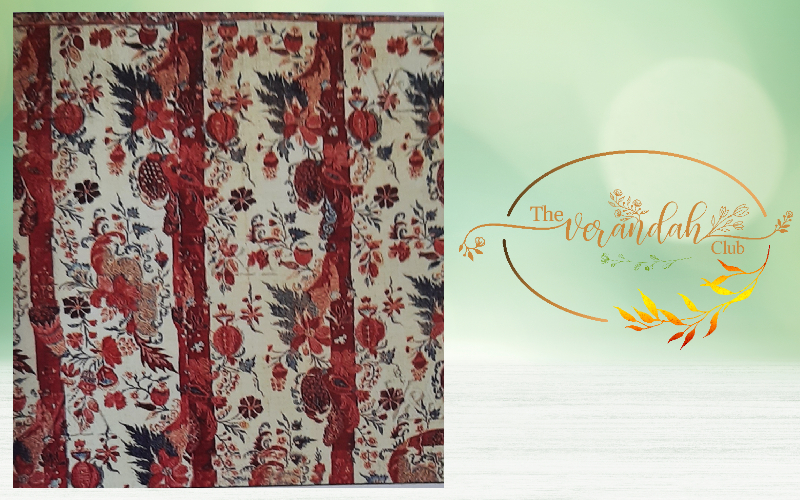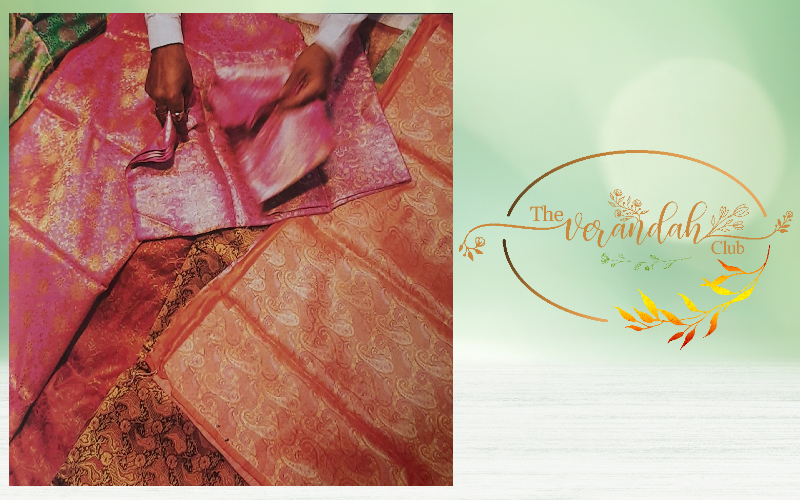(...Continuation)

No travel in India can be complete without a visit to textile centre to watch in the craftsperson, the weaver, the embroiderer in the making of these saris; and no possession is more special than that which is direct of the loom and bought from the maker. With the large extant a number of handlooms in the world are supported by a technically skilled pool of craftsperson and weavers, India continues its fabled textile journey. Creating complex lengths of saris on indigenously designed and maintained looms from the ergonomic back-strap, loin loom used by woman across the North-Eastern states to weave once all daily chores are completed to the complex Gathua looms used in Varanasi that are replicating the Kinkhab brocades of the courts of Mughal India. From the tribal belt of Korapur in Orissa where heavy cotton saris with auspicious motifs in colours obtained from the roots of al tree are woven, to the light as air muslin saris of Bengal, the gold and silver brocades of Banaras, a must have in every North Indian wedding, to the brocaded jewel-like colours of the Paithani of Maharashtra enamelled in luminescent colours that continue to be woven since the Peshwa times. The pristine white cotton bordered with elegant gold Kasava saris of Kerala, unique among textiles, to the indigenous raw tussar silk weavers of Bhagalpur in Bihar. The multitude of traditions in Bengal extend from the Baluchari figured silk saris to the finest Daccai cottons of Phulia. The Mangalgiri, Narayanpet, Uppada weaves of Andhra to Kanchipuram, the place for silk temple saris with contrasting borders, the thick Chettinad cotton saris with earthly colours, Mysore silks and Balrampur saris of the South.
Similar yet different from the Chanderi sari the cotton and the silk, warp and weft, Maheshwar in luminescent colours was designed by Rani Ahilyabai Holkar in the 18th century and is suitable for royal wear with its loose weave making it perfect for the hot dry climate of the area. The Kotah Doria weave of Rajasthan is also designed to wear for hot and arid climate.
The Ikat technique wherein cotton or silk yarn for the warp and weft or both are tied and dyed in such a mathematically precise manner that when woven the pattern emerges almost magically in the woven big textile, is a technique perfected in different centres of excellence across India. This technique in its most complicated form is practised in Patan, Gujarat by a single family of weavers who weave the double ikat famed Patola in Gujarat. Woven exclusively by the Salvi family the red, black, yellow, white geometric and floral patterns are still woven with a waiting list for saris extending up to three years. The technique also includes the double and single Bandha of Orissa with its elegant and sophisticated feathery finished patterned motifs that emerge in tying and dying. The Telia Rumal, so named as woven squares were earlier exported to the African and Arab coast for use as lungis and head & shoulder cloth with the use of oil in the preparatory process reflected in the naming. Over the last few decades, the weaving of the Telia has been extended to cotton and silk saris, textile lengths for clothes and a flourishing home furnishing market that is supplied by weavers working in Hyderabad, Pochampally, Chirala, and Puthupaka in Andhra Pradesh.

Bandhini in Rajasthan, Bandhej in Gujarat, the Sungadi of Andhra all use the technique of tying multiple and intricate dots on to the textile to create intricate, colourful and detailed patterns. With multiple ties and repeated dyeing those areas that are tied reserving their colours to create colourful saris with craftsmen in Jaipur, Jodhpur, Udaipur, Bikaner in Rajasthan and in Jamnagar and Bhuj in Gujarat continue to ply their trade.
The Leheriya, literally the wave patterning on fabrics unique to Rajasthan, where the cloth is diagonally rolled and resisted by binding with threads, dyed in a myriad hues and resisted again to create multi-coloured lines and chequered patterns, is popularly used for turbans, saris, and wraps.
Another form of textile patterning present almost across the country with unique regional and cultural differences is hands block printing. Using intricately carved wooden or metal blocks, with a built-in ingenious system of air vents block printers of the Chippa community pattern sari lengths.
The technique is datable to at least as far back as to the 13th century with the archaeological finds of printed cotton fragments at a site in Fustat near Cairo believed to have been imported from India. It can safely be assumed that block printed fabrics were being produced and exported from some time before these datable remnants. A vibrant tradition among the Chippas, literally printers, continue to create saris for contemporary usage with traditional techniques. Plying their trade at centres famous for their particular techniques and with an enormous motif directory and a finely tuned and variegated colour palate a range of block printing techniques is used by the craftsperson including resist printing on textiles with wax, mud, lac, and mern to mordant dyeing and printing to discharge techniques. The craftsperson manipulate the block within a hair’s breath of the other with deft dexterity to create an explosion of prints and colours for saris of all varieties. An expert block printer could use up to 14 blocks for a motif, gradually layering up to create a completed fabric that could go through 21 process stages and take over two months to produce. Distinct traditions continue till today in centres from Ahmedabad, Surat, Baroda, Deesa, Rajkot, Bhuj, Dhamadka, Ajrakhpur, Jamnagar, Bhawnagar, Jetpur, Mundra in Gujarat to Jaipur, Sanganer, Barmer, Balotra, Pipad, Bagru, Jodhpur, Bikaner, Udaipur, in Rajasthan; Bhag, Indore, Mandsore, Jawad in Madhya Pradesh.

The Kalamkari block prints of Machlipatnam and the hand painting of saris based on the Sri Kalahast tradition of Kalamkari in Andhra Pradesh are separate traditions that form part of the genre. The introduction in the last decade of the Japanese technique of clamp resist and stich resist Shibori to saris has gained in popularity with tie dye artisans adapting this technique to their repertoire.
No chapter on the Sari can be complete without reference to Khadi – hand spun, hand-woven, and a potent symbol of Swadeshi Movement and of the Mahatma. This was a unique protest an indigenous standing up against the might of the British Empire, an emotional rallying point in the fight for India's independence.
The list of distinctive embroidered saris is long and distinguished. From the fine white on white Nawabi Chikankari of Lucknow and the Phool-Patti shadow applique also of Lucknow in Uttar Pradesh, it continues into the Kausti embroidery on the Ilkal sari of Karnataka, while no wedding sari can be complete without the zari and zardozi embroidery. Embroidery additions now adapted to the Sari include the Kashida and crewel embroidery of Kashmir to the Banjara embroidery of Sandur in Karnataka. The Kantha of West Bengal had seen a transfer from the quilt to silk and cotton saris. Applique techniques of Barmer in Rajasthan and centres in Gujarat are now fine-tuned for the sari.
While traditions are alive they are under threat, as is the livelihood of textile weavers and textile embellishers. It will require a concerted and sustained effort from all of us to ensure that this essential part of our cultural fabric and these keepers of our tradition are nurtured for the next millennia. So, next time you travel anywhere in India remember that a weaver, a block printer, a dyer, an embroiderer is somewhere waiting to be discovered as a part of the textile revival journey.
This discourse around how the Sari is being replaced by the Punjabi suit has never been more fractious than it is now. But whether you are a traditional or contemporary woman, an actress or a fisher woman, an agriculturalist, a teacher, or a politician, a high-profile professional or a housewife, it seems the sari does continue to matter.
NEXT ARTICLE